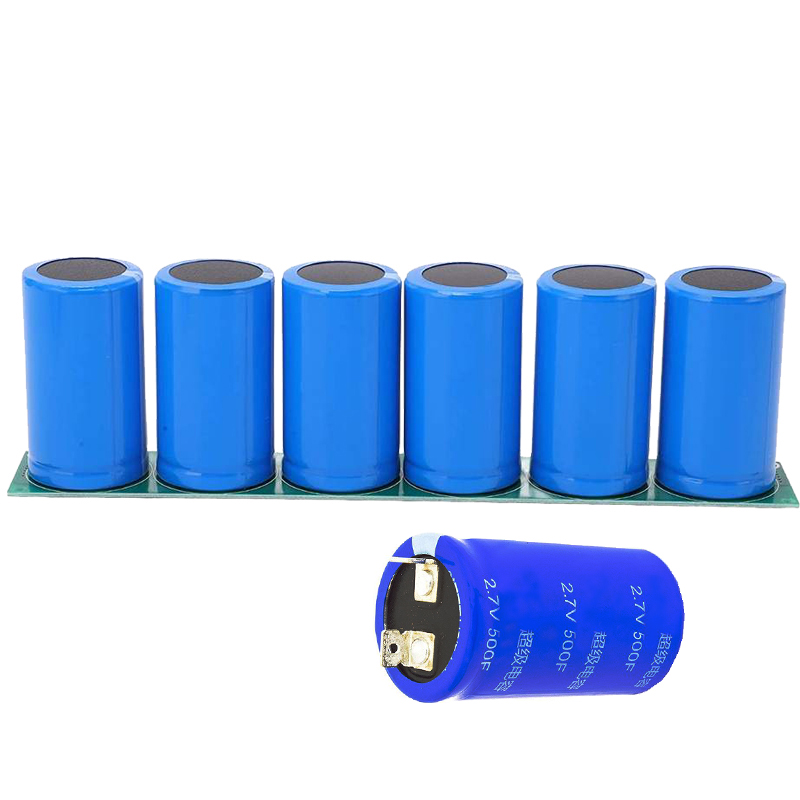Consulting phone:
135-3037-2041
(Mr.Wang)
The specific details of the structure of supercapacitors depend on their application and usage. Due to manufacturer or specific application requirements, these materials may vary slightly. The commonality of all supercapacitors is that they all contain a positive electrode, a negative electrode, and a separator between these two electrodes, with the electrolyte filling the pores separated by these two electrodes and the separator.
The structure of a supercapacitor is shown in the figure. It is composed of a porous electrode material with high specific surface area, a current collector, a porous battery separator, and an electrolyte. The electrode material should be closely connected to the current collector to reduce contact resistance; The diaphragm should meet the conditions of having the highest possible ion conductivity and the lowest possible electronic conductivity, and is generally an electronic insulation material with a fiber structure, such as polypropylene film. The type of electrolyte is selected based on the properties of the electrode material.
(1) : PTFE carrier; (2) : Active material pressed on the foam nickel collector; (3) Polypropylene battery separator.
The components of supercapacitors can vary from product to product. This is determined by the geometric structure of the supercapacitor packaging. For the placement of prismatic or square packaged product components, the internal structure is based on the setting of the internal components, that is, the internal collector is extruded from the stack of each electrode. These collector pads will be soldered to the terminals, thereby expanding the current path outside the capacitor.
For products packaged in circular or cylindrical shapes, the electrodes are cut into rolls for configuration. Finally, solder the electrode foil to the terminal to expand the external capacitive current path.
Characteristics of Supercapacitors
During the use of supercapacitors, there are no chemical reactions or mechanical movements such as high-speed rotation; There is no pollution or noise to the environment; Its simple structure and small size make it an ideal energy storage device.
Supercapacitor products have the following technical characteristics:
(1) Fast charging speed. It only takes 10 seconds to 10 minutes to fill over 95% of its rated capacity;
(2) Long cycle life. The deep charge discharge cycle can reach 1-500000 times, and the cycle life of the 2.7V supercapacitor series capacitors is above 500000 times;
(3) High energy conversion efficiency. High current energy cycle efficiency>90%;
(4) High power density. Up to 300W/kg -50000W/kg, which is 5-10 times that of a battery;
(5) The production, use, storage, and dismantling process of raw materials are pollution-free, making it an ideal green and environmentally friendly power source; High safety factor, maintenance free for long-term use;
(6) High charging and discharging efficiency. Due to the small internal resistance, the charging and discharging losses are also very small, with a high charging and discharging efficiency of over 90%.
(7) Wide temperature range. Reaching -40 to+70 ℃. The reaction rate of supercapacitor electrode materials is not significantly affected by temperature;
(8) Convenient detection and control. The remaining electricity can be directly calculated using the formula E=CV2/2, and the stored energy can be determined by detecting the terminal voltage. The calculation of State of Charge (SOC) is simple and accurate, making it easy to manage and control energy.

Working principle of supercapacitors
The basic principle of supercapacitors, like other types of double-layer capacitors, is to use a double-layer structure composed of activated carbon porous electrodes and electrolytes to achieve ultra-high capacity. The outstanding advantages are high power density, short charging and discharging time, long cycle life, and wide operating temperature range. It is one of the largest capacity double layer capacitors in the world that has been put into mass production.